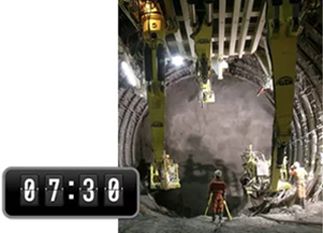体育馆建设的英文(gymnasium)
The term "gymnasium" refers to the main building of a sports complex, often used as a venue for various athletic events. It is typically designed with large open spaces and can accommodate a variety of sports facilities such as basketball courts, tennis courts, swimming pools, and other fitness areas. The gymnasium is often equipped with high-quality artificial turf or concrete surfaces to ensure safety and comfort for athletes during their training sessions. Additionally, it may include locker rooms, showers, changing rooms, and other amenities to support the needs of athletes and visitors alike. Overall, the gymnasium serves as a central hub for promoting physical fitness and healthy lifestyles within a community or school.
- What are the main components of a typical gymnasium construction?
- How does the design of a gymnasium impact its functionality and usability?
- What safety measures are typically included in gymnasium construction to ensure the well-being of spectators and athletes?
- How do modern gymnasiums incorporate sustainable practices into their construction to minimize environmental impact?
- What challenges do architects face when designing gymnasiums that accommodate both sports and recreational activities?
Answer:
The main components of a typical gymnasium construction include a floor made of durable materials, walls constructed with soundproofing materials, ceilings for air circulation, and a roof for protection from the elements. Additionally, the gymnasium may have features such as locker rooms, showers, and changing rooms.

The design of a gymnasium can significantly impact its functionality and usability. For example, the layout should be optimized for easy access to equipment and facilities, while also ensuring that space is available for socializing and practicing teamwork. Additionally, the lighting and acoustics should be carefully designed to create an optimal training environment.
Safety is a top priority in gymnasium construction, and various measures are taken to ensure the well-being of spectators and athletes. This includes fire safety systems, emergency exits, and secure storage for equipment. In addition, the use of non-slip flooring and proper ventilation helps prevent accidents and injuries during events.
Modern gymnasiums often incorporate sustainable practices into their construction to minimize environmental impact. This can include using energy-efficient lighting systems, recycling water and wastewater, and utilizing eco-friendly building materials. Additionally, the design of the gymnasium itself can help reduce heat gain and loss, which can contribute to energy savings.
Architects face several challenges when designing gymnasiums that accommodate both sports and recreational activities. One challenge is balancing the needs of different users, such as athletes, coaches, and spectators. Another challenge is ensuring that the design is flexible enough to accommodate future expansion or modifications. Additionally, the need to comply with local regulations and codes can add another layer of complexity to the design process.

还没有评论,来说两句吧...